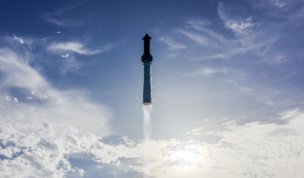Scout Space is planning to send its first standalone spacecraft to orbit aboard the third flight of ABL’s RS1 rocket this year, the space domain awareness startup announced today.
Meet the players: ABL, a launch startup founded by former SpaceX engineers and backed by Lockheed Martin, saw its first launch attempt fail in January 2023. The company is expecting to get its metric-ton vehicle flying again this summer.
Scout, meanwhile, needs to get its Owl optical imaging system on orbit to prove it is the right product for information-hungry national security agencies. Notably, it plans to build, test, license, and launch this satellite within six months.
Climb the value chain: Scout, founded in 2019 by former FAA engineer Eric Ingram and Sergio Gallucci, develops platform-agnostic orbital optical sensors, with the goal of characterizing the orbits and capabilities of other spacecraft.
CEO Philip Hover-Smoot, who took charge of the company in January, wants to build a software stack to exploit that sensor data using edge computing in space.
“We likely are going to be focused more on GEO operations for our US Space Force customers in the coming years,” Hover-Smoot told Payload. This mission will “derisk those bids and operations.”
Birds of a feather: Scout already launched its Sparrow imaging system for small satellites aboard a bus built by Apex.
- The spacecraft launched by ABL will demonstrate Owl, a 150-mm telescope that can capture imagery of spacecraft from farther away.
- The company’s final sensor is Raven, which is designed to provide the information needed for spacecraft performing rendezvous and proximity operations.
Flight demand: Hover-Smoot told Payload that one of its Raven sensors has been integrated in spacecraft built by another company for orbital demos, but is unlikely to get off the ground due to financing problems. That has led Scout to finance their own spacecraft for the Owl mission, with a bus being built by an undisclosed non-US provider.
Correction: This story has been updated to accurately reflect Hover-Smoot’s start date as CEO and the specifics of the Owl and Raven products.




